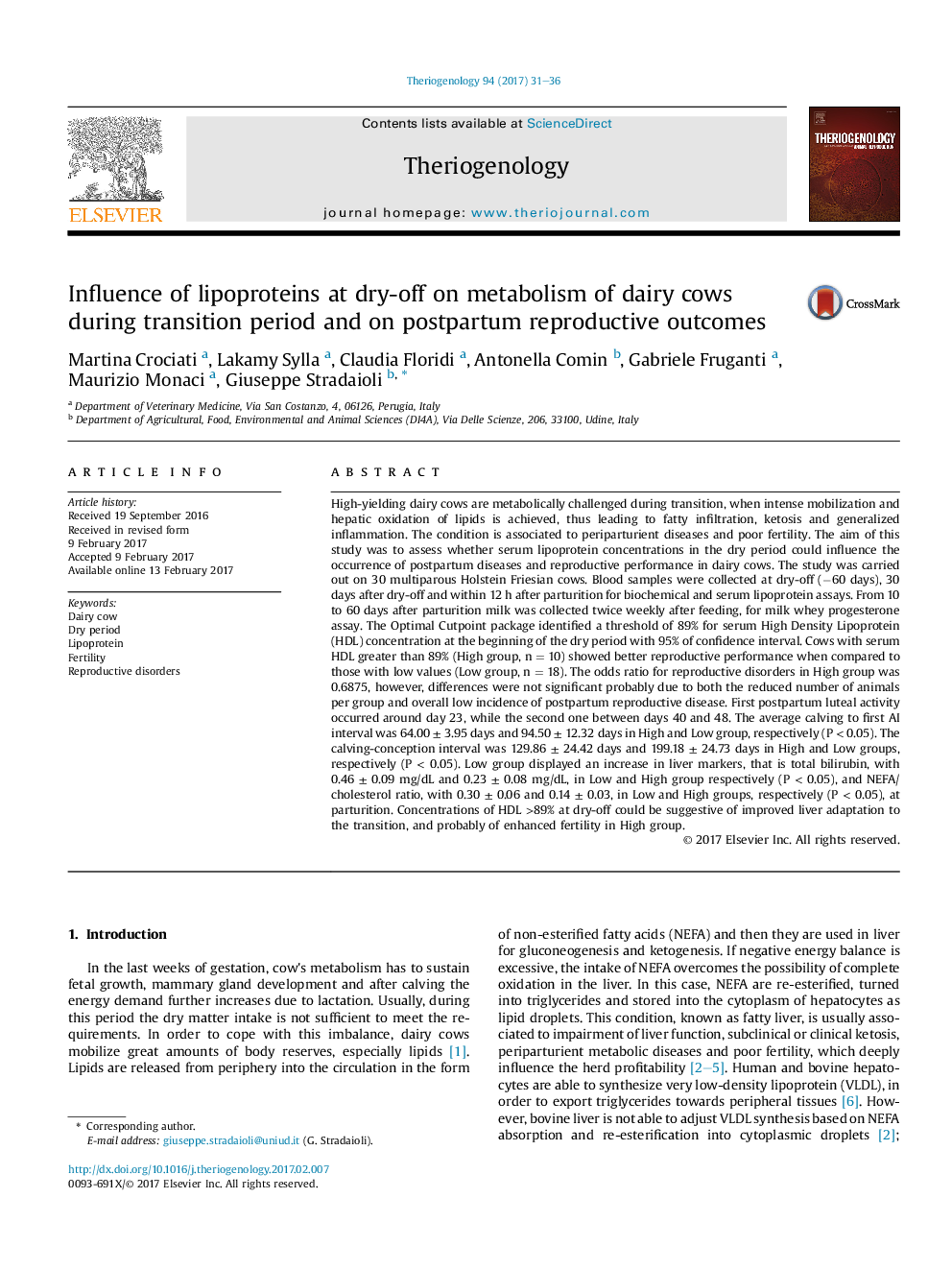| کد مقاله | کد نشریه | سال انتشار | مقاله انگلیسی | نسخه تمام متن |
|---|---|---|---|---|
| 5523400 | 1546075 | 2017 | 6 صفحه PDF | دانلود رایگان |
- We study whether lipoprotein concentrations in the dry period could influence the reproductive performance in dairy cows.
- The Optimal Cutpoint package identified threshold of 89% for serum HDL concentration at the start of the dry period (95% CI).
- Cows with serum HDL greater than 89% tended to show better reproductive performance when compared to Low group.
- The odds ratio for reproductive disorders in High group was 0.6875.
- HDL > 89% at dry-off could influence liver adaptation to the transition, thus enhancing fertility in High HDL cows.
High-yielding dairy cows are metabolically challenged during transition, when intense mobilization and hepatic oxidation of lipids is achieved, thus leading to fatty infiltration, ketosis and generalized inflammation. The condition is associated to periparturient diseases and poor fertility. The aim of this study was to assess whether serum lipoprotein concentrations in the dry period could influence the occurrence of postpartum diseases and reproductive performance in dairy cows. The study was carried out on 30 multiparous Holstein Friesian cows. Blood samples were collected at dry-off (â60 days), 30 days after dry-off and within 12 h after parturition for biochemical and serum lipoprotein assays. From 10 to 60 days after parturition milk was collected twice weekly after feeding, for milk whey progesterone assay. The Optimal Cutpoint package identified a threshold of 89% for serum High Density Lipoprotein (HDL) concentration at the beginning of the dry period with 95% of confidence interval. Cows with serum HDL greater than 89% (High group, n = 10) showed better reproductive performance when compared to those with low values (Low group, n = 18). The odds ratio for reproductive disorders in High group was 0.6875, however, differences were not significant probably due to both the reduced number of animals per group and overall low incidence of postpartum reproductive disease. First postpartum luteal activity occurred around day 23, while the second one between days 40 and 48. The average calving to first AI interval was 64.00 ± 3.95 days and 94.50 ± 12.32 days in High and Low group, respectively (P < 0.05). The calving-conception interval was 129.86 ± 24.42 days and 199.18 ± 24.73 days in High and Low groups, respectively (P < 0.05). Low group displayed an increase in liver markers, that is total bilirubin, with 0.46 ± 0.09 mg/dL and 0.23 ± 0.08 mg/dL, in Low and High group respectively (P < 0.05), and NEFA/cholesterol ratio, with 0.30 ± 0.06 and 0.14 ± 0.03, in Low and High groups, respectively (P < 0.05), at parturition. Concentrations of HDL >89% at dry-off could be suggestive of improved liver adaptation to the transition, and probably of enhanced fertility in High group.
Journal: Theriogenology - Volume 94, May 2017, Pages 31-36
